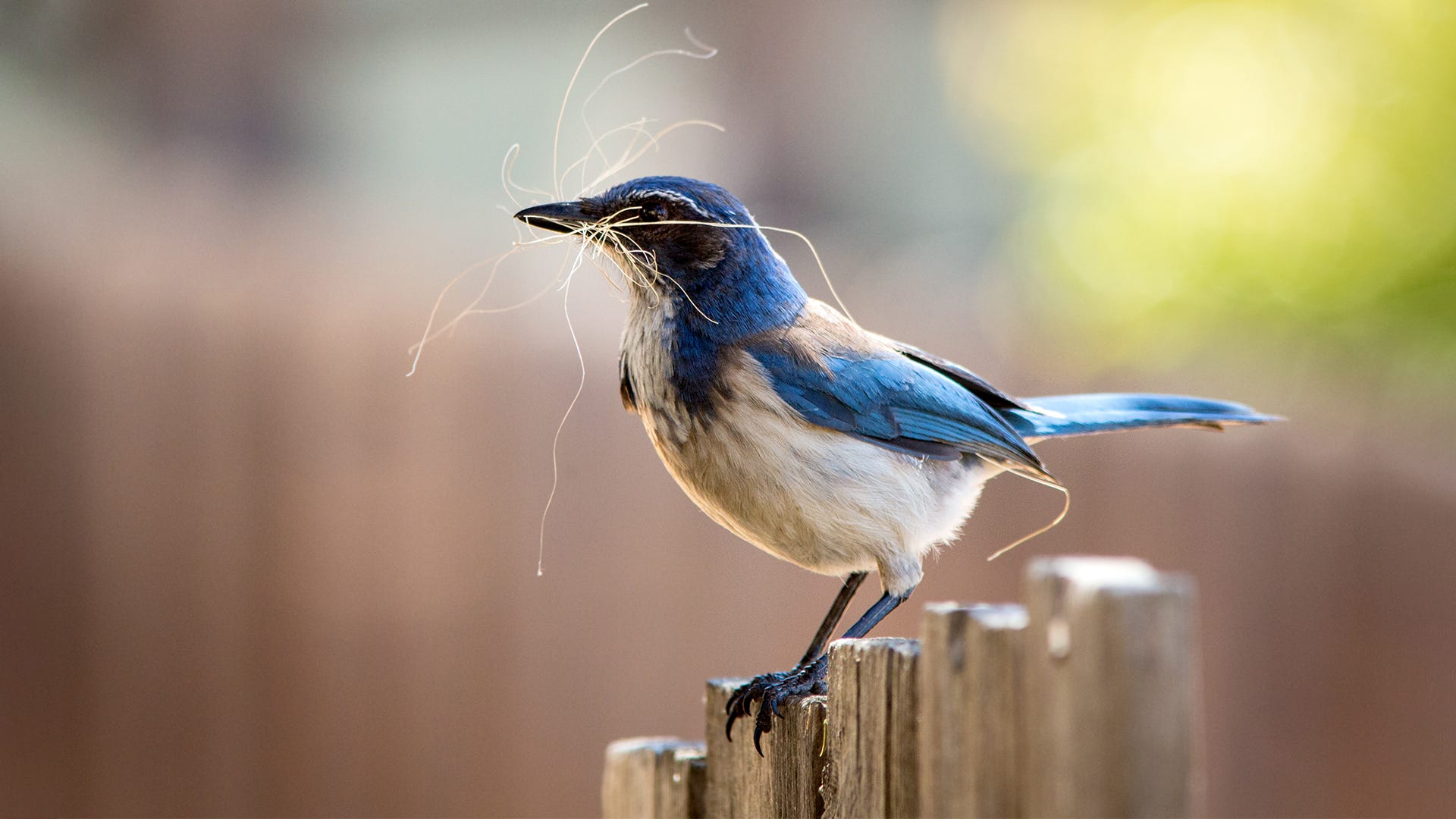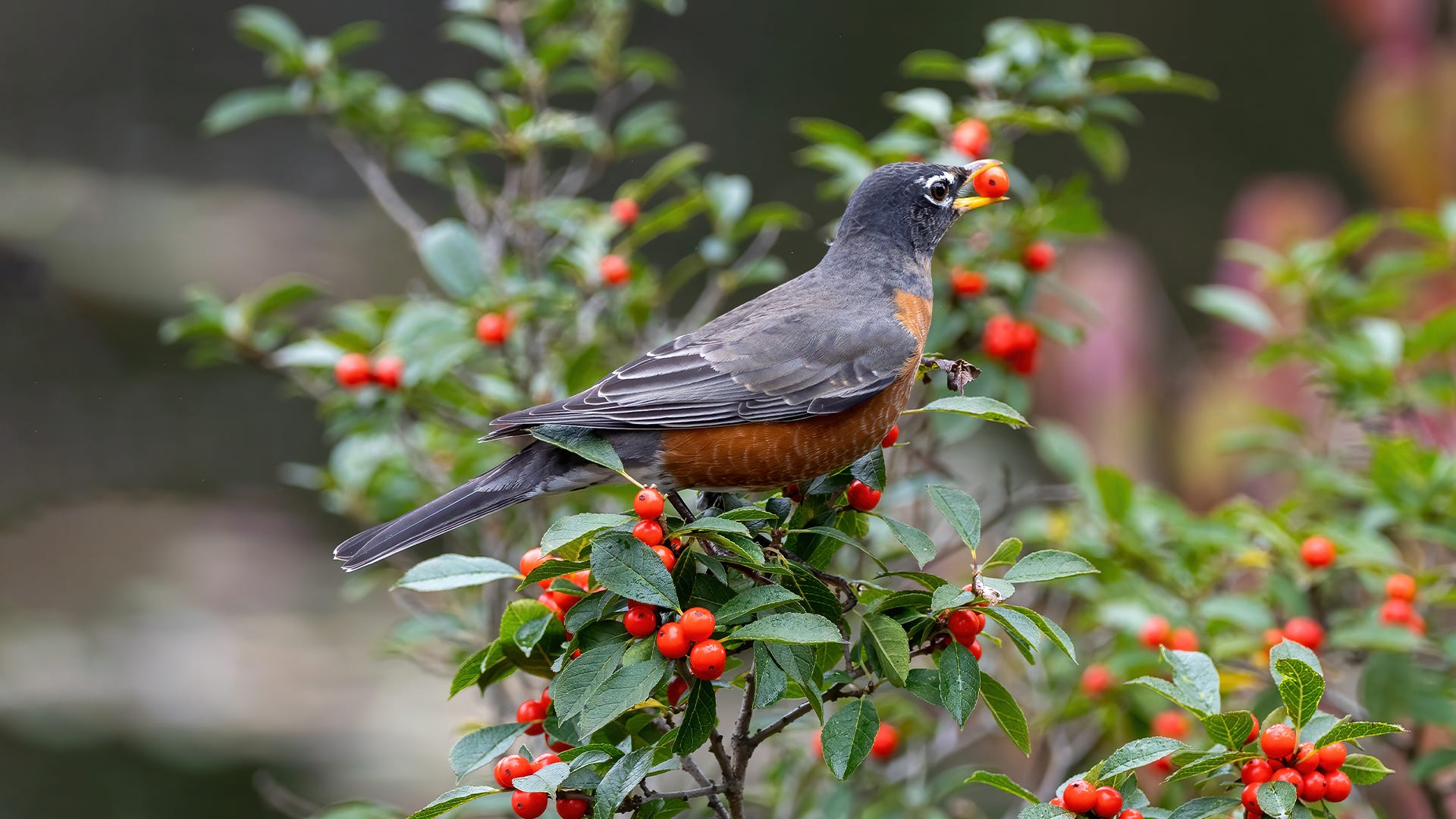
Birds use many different types of materials to build their nests, and backyard birders can easily encourage nesting birds to take up residence nearby if they offer convenient construction materials. Some of the most commonly offered materials, however, can also be some of the most dangerous for bird families. By recognizing which materials aren’t appropriate, birders can be sure to offer only the best nesting materials to birds.
Top 5 Nesting Materials You Should NEVER Offer to Birds
Unfortunately, some of the nesting materials that are easiest and most convenient to find around the house are also some of the worst for birds. But why?
1. Dryer Lint
It can seem wasteful to just toss this cozy fluff in the trash. It’s soft, easy to mold, and seems ideal for cushioning delicate birds’ eggs. But it isn’t actually ideal at all, and can actually be dangerous for nesting birds. Because dryer lint has no strong structure, it easily falls apart and isn’t sturdy enough to build a suitable nest. Furthermore, wet lint is very sticky and can coat birds’ legs, feet, and feathers. Dryer lint dust can be hazardous to baby birds’ lungs, and the concentrated chemicals from perfumed and dyed detergents are toxic to both baby birds as well as brooding adults. Furthermore, lint with a strong odor can attract predators, bringing them right to a vulnerable nest.
2. Chemically Treated Pet Fur
Birds frequently gather animal fur to use in their nests. It makes for a soft, warm cushioning for eggs and baby birds. Pet fur, however, is often chemically treated through flea dips or other flea and tick treatments, as well as shampoos, conditioners, and powders. Just as those toxins are lethal to unwanted pests, they’re also highly toxic and poisonous for birds. If your pet does not undergo chemical treatments, however, their fur can be ideal for nesting birds, especially as long-haired pets shed their thicker winter coats just in time for birds to use the excess in their nests.

3. Human Hair
Humans are mammals and our hair is just as useful for birds as pet fur, but only under the same conditions.
The colorful dyes, perfumed shampoos, and thick conditioners we use on our hair, as well as styling gels,
sprays, and mousses, can be just as toxic to birds as flea dips and other chemicals found in pet fur. Even if
you opt for organic products, they can still be concentrated in your hair and dangerous for birds. If,
however, you do not use chemicals on your hair, then small clumps from a recent cut or trim can be put out for
birds to choose as nesting material. If your hair is very long, be sure to cut the strands into shorter pieces
(3-4 inches). This will minimize any risk of longer hair tangling around birds’ legs, feet, or wings.
4. String and Ribbon
Birds use many stringy materials in their nests. Still, the string, yarn, thread, and ribbon leftover from craft projects isn’t always suitable as nesting material. The bright colors from yarn and string can catch predators’ attention, and the dyes that create those colors could be toxic to birds. Furthermore, many craft strings and yarns are woven with artificial fibers, including occasional metallic accents or plastic compounds. Those materials will not stretch, yield, or break down as natural materials would when nests are in use. This means they create brutal tangle hazards for birds, and if strings and ribbons get wrapped around birds’ legs, feet, wings, or necks, they can create injuries or even be fatal. Only undyed, natural strings or yarn should be offered to birds, and only if they’re in short, 3-4-inch lengths.
5. Landscape Fabric
While birders don’t typically offer landscaping weed barrier fabric to birds as nesting material, industrious birds will find these tempting strands poking out from flowerbeds and gardens, and they will tug on it to loosen bits for their nests. Unfortunately, these materials create the same tangle hazards for birds as any artificial string, yarn, and ribbons, and should be kept out of birds’ reach. Deepening mulch layers or tacking down the edges of the fabric with multiple stakes can ensure that birds aren’t able to find these inappropriate, unsafe materials.

Best Nesting Materials for Birds
While dangerous materials should never be offered to nesting birds, there are many safe and suitable options that can help birds build sturdy, functional nests to nurture their families. Many natural materials can be found right in the garden, and others can be placed in the yard for birds to find. Great options include:
- Milkweed and cattail fluff
- Grass clippings (without pesticide or herbicide treatments)
- Mosses and lichens
- Pine needles
- Straw and hay
- Coco fiber linings
- Chicken or poultry feathers
- Spider webs
- Small twigs and weed stems
- Mud
- Small pebbles
- Sheep or alpaca wool
- Shredded leaves
The greater the variety of nesting materials that is made available to birds, the more likely it is that different birds will find just what they need to make their perfect nest, giving birders wonderful opportunities to enjoy nesting birds right in the yard.







